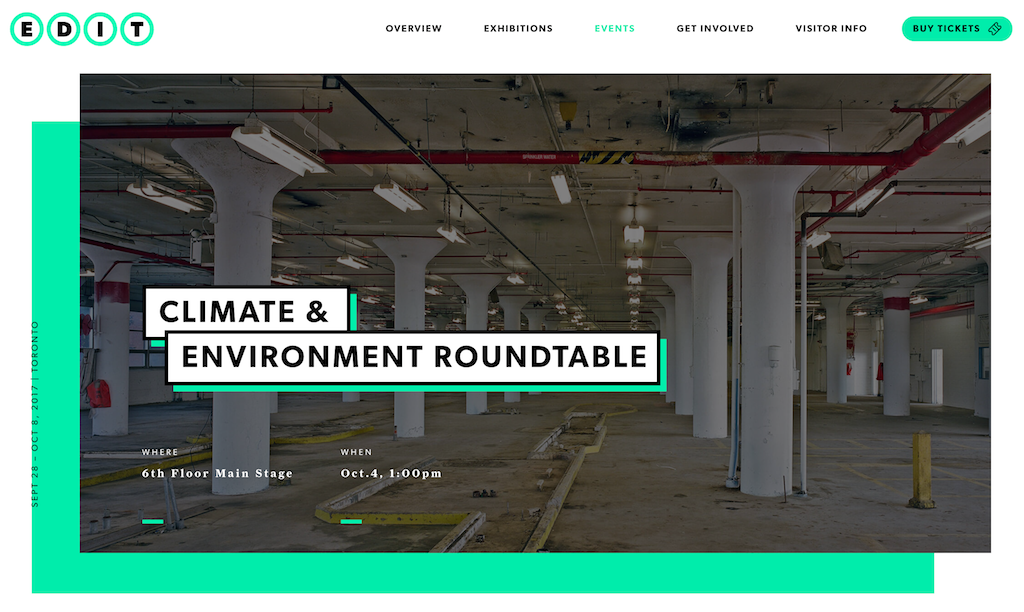Advertising
Edit Festival - Festival of the Future
Posted on Oct 2, 2017

What is a festival of the future?
From September 28 to October 8 2017, step inside a world where crickets can combat global hunger, medical supplies are 3D-printed in outer space, drones deliver blood to remote communities, and shipping containers are the future of farming.
What is design for the future?
We know that design is not just about aesthetics, but also about finding solutions to complex problems.
In 2015, the UNDP (United Nations Development Program) launched the Sustainable Development Goals. This was the moment that convinced us it was time to share the real opportunity for design. The 17 Global Goals for Sustainable Development include ending poverty and hunger, improving health and education, making cities more sustainable, combatting climate change, and protecting oceans and forests by 2030.
While a big job remains ahead of us over a very short period of time, we know that some of these have decreased in the last two decades in large part because of design. Much more is to come. For example, drones are monitoring disaster regions; vertical gardens are expanding new opportunities for food production; and food waste is being transformed into precious renewable energy.
Solar Village founder, John Wilson, will be presenting and speaking at the Climate and Environment Roundtable on October 4 at 1pm. In his talk, John will address his vision for a future that uses 100% renewable energy and 100% renewable resources. He calls this Solar Village and sees it emerging through initiatives like Solar Village and companies like Wastenot Farms, Waterwheel Farms, Better Current and Headwaters Academy.
Learn MoreUN Things You Can Do
Things you can do from your couch
- Save electricity by plugging appliances into a power strip and turning them off completely when not in use, including your computer.
- Stop paper bank statements and pay your bills online or via mobile. No paper, no need for forest destruction.
- Share, don’t just like. If you see an interesting social media post about women’s rights or climate change, share it so folks in your network see it too.
- Speak up! Ask your local and national authorities to engage in initiatives that don’t harm people or the planet. You can also voice your support for the Paris Agreement and ask your country to ratify it or sign it if it hasn’t yet.
- Don’t print. See something online you need to remember? Jot it down in a notebook or better yet a digital post-it note and spare the paper.
- Turn off the lights. Your TV or computer screen provides a cosy glow, so turn off other lights if you don’t need them.
- Do a bit of online research and buy only from companies that you know have sustainable practices and don’t harm the environment.
- Report online bullies. If you notice harassment on a message board or in a chat room, flag that person.
- Stay informed. Follow your local news and stay in touch with the Global Goals online or on social media at @GlobalGoalsUN.
- Tell us about your actions to achieve the global goals by using the hashtag #globalgoals on social networks.
In addition to the above, offset your remaining carbon emissions! You can calculate your carbon footprint and purchase climate credits from Climate Neutral Now. In this way, you help reduce global emissions faster!”
Level 2: Household heroThings you can do at home
- Air dry. Let your hair and clothes dry naturally instead of running a machine. If you do wash your clothes, make sure the load is full.
- Take short showers. Bathtubs require gallons more water than a 5-10 minute shower.
- Eat less meat, poultry, and fish. More resources are used to provide meat than plants
- Freeze fresh produce and leftovers if you don’t have the chance to eat them before they go bad. You can also do this with take-away or delivered food, if you know you will not feel like eating it the next day. You will save food and money.
- Compost—composting food scraps can reduce climate impact while also recycling nutrients.
- Recycling paper, plastic, glass & aluminium keeps landfills from growing.
- Buy minimally packaged goods.
- Avoid pre-heating the oven. Unless you need a precise baking temperature, start heating your food right when you turn on the oven.
- Plug air leaks in windows and doors to increase energy efficiency
- Adjust your thermostat, lower in winter, higher in summer
- Replace old appliances with energy efficient models and light bulbs
- If you have the option, install solar panels in your house. This will also reduce your electricity bill!
- Get a rug. Carpets and rugs keep your house warm and your thermostat low.
- Don’t rinse. If you use a dishwasher, stop rinsing your plates before you run the machine.
- Choose a better diaper option. Swaddle your baby in cloth diapers or a new, environmentally responsible disposable brand.
- Shovel snow manually. Avoid the noisy, exhaust-churning snow blower and get some exercise.
- Use cardboard matches. They don’t require any petroleum, unlike plastic gas-filled lighters.
Source: UN development goals